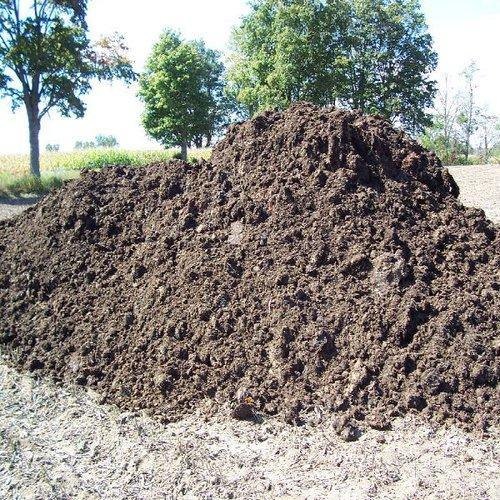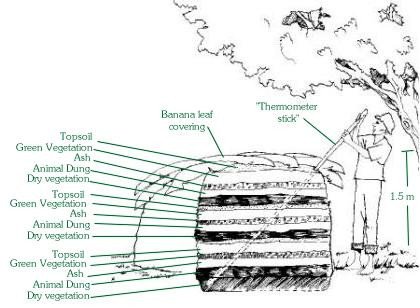
By George Munene
With the price of a 50Kg bag of fertiliser set to more than double from its price last year to a historic Sh 7,000, we will be highlighting alternatives/ supplements farmers can use to enrich their soils.
Compost manure is perhaps the easiest to make and complete organic alternative to synthetic fertilisers. Readily available sources of animal and plant wastes are often used. It is a source of the most important elements in crops; Nitrogen, Phosphorus, and Potassium (NPK); in limited quantities. The ratios are determined by the source of the manure.
On average well-decomposed farmyard manure contains 0.5% nitrogen, 0.2% phosphorus, and 0.5% potassium. Incorporating animal waste helps bolster farmyard manure as it contains higher nutrients than farmyard manure and compost. On average, cattle dung contains 3% nitrogen, 2% phosphorus, and 1% potassium (3-2-1 NPK). Sheep and goat droppings contain 3% N, 1% P2O5, and 2% K2O. Poultry manure contains even higher nitrogen and phosphorus quantities at 3.03% N; 2.63% P2O5 and 1.4% K2O.
Composting is often done using two methods; pit and pile. The composting method is determined by locality, space, and need. Digging a pit for compost material helps preserve moisture and shouldn't be practiced in areas at risk of waterlogging or exposure to intense sunlight.
Related News: Kiambu farmer cuts lucrative niche in vermicomposting
Related News: Farmer harnesses rabbit urine for compost, fertiliser and pest control
Pit composts encourage decay as organisms shift from the soil to feed on the organic material.
- The pit’s dimensions should be 120 cm wide and 150 cm deep, with its length determined by the quantity of waste you have available, it should however be a length that is navigatable.
- Gather about 36 kilograms of topsoil/ soil gathered up to 30 cm deep.
- Fill a bottom layer of chopped coarse material, such as maize or Napier stalks, and cuttings from tree hedges up to about 30 cm. Sprinkle some water on the pile, as you will after every layer to ensure the compost is moist.
- Add a 15 cm thick second layer of dry vegetation, grass, or hedge trimmings. Sprinkle water on this layer as well.
- The third base consists of layered livestock manure.
- This pile should be sprinkled with ash. Ashes contain calcium and potassium, which are required by the plant and help in the decomposition process by regulating the pH in the heap by neutralising acidity, especially in the manure.
- This layer should ideally consist of leaves from leguminous green trees and shrubs that are high in protein. E.g, Leucaena, Tithonia, Acacia, Calliandra, and Sesbania.Weeds can be used to add important microelements. Roots and stems of destructive weeds, e.g, strangler weeds should be cut into small pieces/crushed to avoid regrowth.
- Sprinkle a bit of the topsoil you had dug earlier mixed in with some old compost, topsoil, wood ash, and urine. These contain living organisms and bacteria that will hasten the rotting process.
- Add layers of dry plant materials, then animal manure/ slurry, wood ash, green vegetation, and finally topsoil up to about 150m. Water should be sprinkled to every pile.
- Finally, layer the compost heap with 5cm of cattle dung and soil. This will prevent plant nutrients from escaping from the compost heap.
- Cover with dry vegetation such as dry banana/palm leaves, to reduce moisture loss through evaporation.
- A sharpened "thermometer" stick is pierced through compost. It is used to check on decomposition and the wetness/dryness of the composting pile.
- The pile is turned and thoroughly mixed first on day 15, after a month, and finally two months.
- Water should be sprinkled into the pile about every three days if it hasn't rained.
- The compost should be ready for use after one month.
*Per infonet biovision; Well-decomposed compost should be applied at the rate of 20 t/ha (8 t/acre): about two large hoefuls per square meter, or enough to barely cover the ground with a layer 1 cm thick.

Figure source:infonet biovision
Nitrogen is crucial in maintaining conditions that allow microorganisms to decompose waste. This makes it essential to incorporate waste from legumes, e.g, beans, pigeon peas, and soya beans. These plants have nitrogen in the nodules on their roots as well as in their leaves. Fresh droppings from livestock also contain nitrogen.
While some ammonia is lost to the atmosphere, this can be greatly reduced if some soil is added to the heap. This should not exceed one percent of the total weight of the heap.
Related News: Artist farmers create urban farm hub from sacks and old plastic
Good compost manure should be:
- fully decomposed,
- darkish-brown in colour,
- without too much heat,
- of pleasant odour,
- smooth to touch,
- of good structure,
- one that has nearly all component parts (refuse) decomposed except for a few parts that are naturally difficult to decompose or those that never do,
- of average moisture content. This shows that the manure preserves adequate water for every period,
- one that consists of plant nutrients which it slowly releases to the soil for use by plants,
- one that does not have weeds, disease viruses, or live seeds of any kind.
- The resultant compost fertilizer will be alkaline or acidic, depending on the type of refuse in the compost heap, how its mixed, air availability, moisture levels, and the presence/addition of ash/ lime.
Source: Learn how to Make and Use Compost Manure in Farming, Pius B. Ngeze
Organic matter is the lifeblood of the soil; it helps replenish depleted nutrient reserves in soils caused by excessive chemical fertiliser use. This causes soil health problems that hinder the consistent increase in agricultural production.
Organic manures increase microbial activity in soils and enable it to hold more water and help improve its drainage.
Regular addition of organic matter to soils should be a key feature of any modern agriculture enterprise.